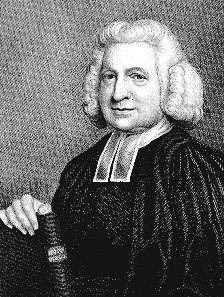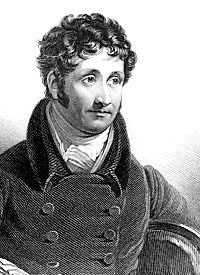Every week starting today, I'll be cutting and pasting a hymn of of the week to share with you all. The link I am sharing this from is: http://www.celebratingholidays.com/?page_id=10756. I do not own any of the rights to this article nor have I written it, but it is my wish to share this information with anyone who is interested in reading the history of various hymns. Hope you all enjoy it as much as I do! :) God bless you!
History of “And Can It Be That I Should Gain (Amazing Love)”
Words by Charles Wesley (1707-1788), Published in 1738Taking quantity and quality into consideration, Charles Wesley could arguably be called the greatest hymn-writer of all time.1 Charles published thousands of hymns, but he also, along with his brother John, founded the Methodist movement and played a significant role in a spiritual awakening throughout Great Britain.
At age 8, after being educated at home by mother, Charles entered the Westminster School in London. By age 18, he was elected to Christ Church College, Oxford, where he spent much of his time translating Greek and Latin classics into English verse. During his time in college, Charles helped to found the “Holy Club.” Within its first year, Charles turned leadership of the club over to his brother John (who Charles believed to be a more gifted leader). The group met often to study the Bible and the classics. They also sought to live holy lives by taking communion often, fasting on Wednesdays and Fridays, serving the poor and working in prisons. Classmates derisively called the group “Methodists” because of their methodical habits of study and devotion. Though the group dissolved in 1735, when the Wesleys left on a missionary trip to America, it was considered the beginning of the Methodist movement.2
Commissioned by the Church of England, Charles and his brother John sailed to America in 1735 as missionaries to the colony of Georgia. However, it appears that the Wesleys’ missionary efforts were not warmly received. The brothers returned to England feeling discouraged and disillusioned. Fortunately, this sense of dismay would prove to be the impetus for a significant spiritual renewal that was soon to follow.
On his return to England, Charles began associating with a group of Moravians (a mainline Protestant denomination mainly characterized by its commitment to Christian unity, worship and missions). As a result of his interaction with the Moravians, Charles became convicted of the need to know Jesus personally and to surrender his life completely to the Lord. On May 23, 1738, Charles wrote, “[I] gave myself up, soul and body, to him.”3 Charles immediately wrote his first hymns, “Where Shall My Wondering Soul Begin?” and “And Can It Be.”
Hymnologists Harry Eskew and Hugh McElrath record of Charles:
“Before this turning point he, like John,
was an ordained Anglican clergyman and, together with John, a
missionary for a brief period to the Georgia colony. He was also a
gifted poet. But it was not until he was catapulted into a deeply
personal relationship to Jesus Christ as Redeemer and Lord that there
was released in him the gift of sacred song.”4
Charles’ diary reveals that he had difficulty completing his first hymns because of doubts. Fortunately, he overcame his struggle and concluded:
“Least of all would he [the enemy] have
us tell what things God has done for our souls . . . . In His name,
therefore, and through his strength, I will perform my vows unto the
Lord, of not hiding His righteousness within my heart.”5
From the point of his conversion, hardly a day or experience would pass without it taking form in verse. And Charles’ ministry efforts came to be motivated less by obligation than by genuine love for God and for mankind. By the end of his life, Charles had published more than 4,500 hymns (and another 3,000 were left as manuscripts).
Charles’ brother John had a separate conversion experience shortly after Charles, which set the two brothers on a course of ministry that would bring spiritual awakening to their native country of England. Hymnologists Harry Eskew and Hugh McElrath record:
“The picture of England during the
opening decades of the 18th century was a sorry one – morals were
decayed, education was practically non-existent, sanitation was
neglected, literature and the theater were debauched, intemperance was
rampant, crime was wide-spread, politics were corrupt and the clergy
were idle and uncaring. Into such a world came the Wesleys like a
cleansing fire. The great organizer and promoter of the movement was
John Wesley. But by all accounts much of the success of this remarkable
religious awakening must be attributed to the singing of Charles
Wesley’s hymns.”6
After a lifetime of ministry, Charles passed away in 1788. He left behind his beloved wife Sarah and four children — three sons, who all became distinguished in the musical world, and one daughter, who inherited some of her father’s poetical genius.7 It is said that this hymn, “And Can It Be,” was quoted to Charles on his deathbed.8
Tune “Sabina” by Thomas Campbell (1777-1844), Published in 1825
Thomas Campbell’s tune “Sagina” is almost universally associated with “And Can It Be.” Thomas published the tune in 1825 as one of 23 original tunes in a collection titled The Bouquet (in which all of the tune names used botanical terms). Sagina was a plant that grew on the thin rocky soil surrounding Rome. There is some confusion among scholars as to whether this Thomas Campbell is the same person referred to as “the poet” whose poems were published in various hymnals.9 The birth and death dates seem to correspond, so it is possible that this Thomas is indeed the same person who was famed for his poetry, classical verse translations, and essays like “On the Origin of Evil.”



Your heading prints the tune wrongly as SABINA. Most hymn books attribute the tune to another Thomas Campbell (1800 - 1876), some giving the birth year, presumably wrongly, as 1824.
ReplyDelete